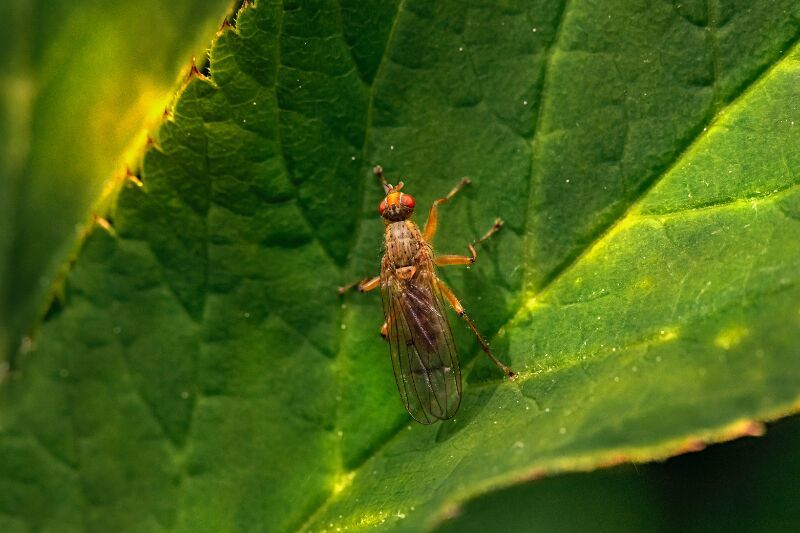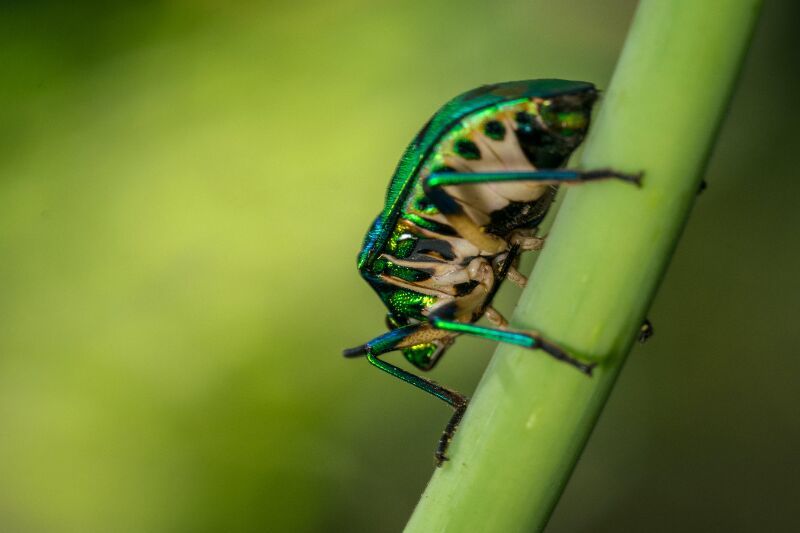10 Pests You Don’t Want to Find in Your Trees
Reading time: 7 minutesIt’s realistic to assume that if you’re a homeowner with a yard and trees, someday you’ll face off against pests. Many pests may try to make their home in your trees, so it’s essential to be vigilant to defend your trees.
Below, we’re exploring 10 pests, both native and invasive, that you want to look out for in our neck of the woods. We’re covering what you need to know about these pests, how to spot them, and what professionals can do to help you ensure your trees look their best for a lifetime.

Understanding Pests in Your Trees
While hearing the words “pest infestation” can sound scary, it doesn’t have to. Pests are a normal part of outdoor spaces, so encountering some is inevitable. That doesn’t mean you have to allow them to overtake your trees or yard and risk their long-term health.
Because pests are an unavoidable part of having trees, the best thing you can be is prepared. You should understand signs of pest issues in your trees, be able to find pests if you want to check yourself, and know when it’s time to contact a professional to help get rid of these invaders entirely.
It’s essential that you understand your property as best you can because you’re the first person who will notice if something’s gone wrong. A professional arborist is a great tool, but even they can’t be around your trees 24/7. Of course, this doesn’t mean you must become an expert at pest identification or treatments. But now you can successfully care for your trees and keep them healthy for a long time.
10 Tree Pests to Avoid
While more than 10 pests in Canada can affect your trees, these are some of the top ones to remember when you’re concerned about your outdoor properties. From Elms to Maples and everything in between, there’s a pest that can impact any tree in your yard.
Elm Bark Beetles
Three kinds of beetles fall under the umbrella of elm bark beetles. All three are found in elm trees and carry the fungus that causes Dutch Elm Disease (or DED). Visually, elm bark beetles are small and measure between 1/12th and 1/6th of an inch. They have a hard outer body and are likely to have stiff yellow hairs with lines on the wing coverings.
These beetles dig holes in trees and lay eggs under the bark layer. The larvae will then tunnel through the tree and leave behind sawdust trails you can use to identify them. The trails are often the first sign that you’re dealing with these insect pests. After that, you’ll notice yellowing of the leaves and eventually defoliation at the tree's crown.
Forest Tent Caterpillar
The forest tent caterpillar is a native species of caterpillar in North America. They can cause massive destruction to trees because they eat the leaves of trees and can eat so much that they decimate entire groups of trees.
As eggs, you’ll find these caterpillars in masses stuck together by a glue substance that turns brown after a while. Once they hatch, identifying these pests is easy because they have distinctive markings. As caterpillars, you’ll find pale blue stripes down their sides, with brown bodies and white markings that look like keyholes.
Outbreaks of these creatures will usually last 3-5 years, but they can be managed by removing the egg masses and young larvae by hand or by smashing them. Some insecticides can also be used, but you should always ensure that these won’t cause damage to your trees or to other nearby wildlife.
Cankerworm
Cankerworms are a kind of caterpillar, also known as loopers, inchworms, or measuring worms. You will likely find them on American elms, Manitoba maples, and Green ash from May to June. There are two types of cankerworms: spring and fall cankerworms.
In their caterpillar stage, the cankerworm ranges in colour from yellow-green to brown and light to dark green and black. As adult moths, both fall and spring cankerworms are more greyish-brown. Additionally, the female adults do not have wings.
These moths and caterpillars can cause extreme damage because they eat the leaves on trees. It can become so bad that they’ll eat the entirety of a leaf and leave behind only the veins. From there, they can completely strip a tree and leave it vulnerable to other insects and diseases. The first signs are much smaller holes left in the leaves so that you can catch these pests early.
Leaf Miner
A type of fly, the leaf miner, is called such because they “mine” and leave tunnels in the leaves of trees. As adults, leaf miners can be moths, beetles, or flies, which changes the types of tunnels you’re likely to find in leaves.
These tunnels are still easily identifiable, so it’s something you can still catch on your own. Other signs include browning and drying of leaves and dropping early or very translucent leaves.
Elm Spanworm
The Elm spanworm is a native insect in Canada and the United States. They feed on several species of trees, including elm, ash, oak, American beeches, among others. You’re most likely to see this species in the late spring and early summer, as they begin to hatch in May.
One way to identify the spanworm on your trees is through their eggs, which are laid in large, single-layered masses on the bottom of leaves. In their larval stage, the caterpillar ranges from bright green to brown and can look like twigs. As adults, they become white moths.
These pests are big defoliators, so they’ll consume the entirety of a leaf and can quickly cause harm to your trees. Since all the damage is done when the spanworm is in its larval stage, it’s crucial to treat these native bothers quickly.

Cottony Ash Psyllid
This invasive species has been found in several communities around Manitoba and Alberta. It is thought to have originated in Europe. These creatures hide under leaves, so they can be challenging to spot at first, but there are still signs that they’ve made their home in your trees.
One big sign is when you find a cotton-like substance on the bottom of leaves. You may also notice yellowing or the curling of leaves so they become misshapen. The larval stage of this insect is relatively small, and they are usually light green.
Scale Insects
Scale insects encompass a group of insects that have a hard outer shell and are relatives of aphids. These insects are a problem because they suck the sap from twigs, leaves, and branches.
It can be challenging to control scale insects because they don’t move often, and their shell offers a lot of protection against treatments. When the pests reach the crawling phase and leave the mother’s protective shell, that’s your best chance to treat them, but you have to be extremely vigilant since they are so small at this stage.
Some examples of these insects include the pine needle scale, European fruit lecanium, oystershell scale, and scurfy scale. It’s worth noting that these are not the only species in the area. Deciduous trees will generally manage to escape a lot of damage, but conifers can face extreme damage if the infestation continues for a long time.
Pitch Mass Borer
This moth affects the white pine most often but can also impact other types of trees, like white, Colorado, and Norway blue spruces. With repeated infestations, your trees can face serious health concerns and death.
Adults of this insect species look a little bit like yellow jackets, while the larval caterpillar is usually white to pink, with a brown head that’s pretty small. These pests have an extended lifespan, meaning you can find multiple life stages on trees that face infestation.
Some common signs of this insect include pitch masses and entry holes. A pitch mass is an obvious sign with a lump of tree sap forming around the holes where the borer has entered. You’re also likely to notice sawdust or wilted leaves as part of an ongoing infestation. You should be careful because infestations can reoccur, which usually happens at sites where there have been issues before.
Spruce Budworm
Native to Canada and the United States, the spruce budworm is a pest that affects spruce and fir trees. It can cause serious damage to trees, causing a loss of leaves and stunted growth. They particularly enjoy feeding on new tree growth, like needles and buds.
In the spring, usually May, you’ll see the younger larva, which look yellow and have brown heads. The older larval form is more reddish-brown and has a black head with white spots down the back. As adults, the moth maintains a reddish-brown look.
In the larval stage, these insects are wasteful feeders, leaving behind much of a leaf or needle in addition to a silky webbing. This webbing eventually makes the tree look scorched and, left long enough, the death of tree branches.
Spider Mites
A member of the arachnid class, spider mites are tiny pests that feed on various plants, including houseplants, your garden’s plants, and crops. While related to spiders, these creatures are not spiders and are more closely connected to ticks.
These pests are called spider mites because they leave behind a fine webbing like a spider’s web. Some of the first signs of these arachnids are their webs, discolouration, and yellowing or bronzing of leaves. You’re most likely to find these creatures on the bottom of leaves, but they rarely travel far from the plants they’re on.
Turning to the Professionals: Arborists Are Your Best Resource Against Tree Pests
While there are many treatments you can explore on your own, the best way to care for your trees when you worry about pest infestations is to turn to an arborist. These professionals have the training to identify a pest threat correctly the first time and have access to higher-powered and more advanced technology and treatments.
With an arborist on your side, you don’t have to worry about researching and finding products or worrying if you’ve chosen the proper treatment. You’ll just take advantage of the years of experience an arboreal team has to treat your trees well and maintain good tree health.
Get Diagnosis and Personalized Treatments from Green Drop
If you’ve noticed pests around your trees or want to ensure they’re on the right track, it’s time to talk to the team at Green Drop. Our fully certified arborists understand everything your trees need and will personalize each recommendation and treatment to your property.
Our friendly and passionate team is ready to help you. Get in touch and get your free tree care estimate today!

